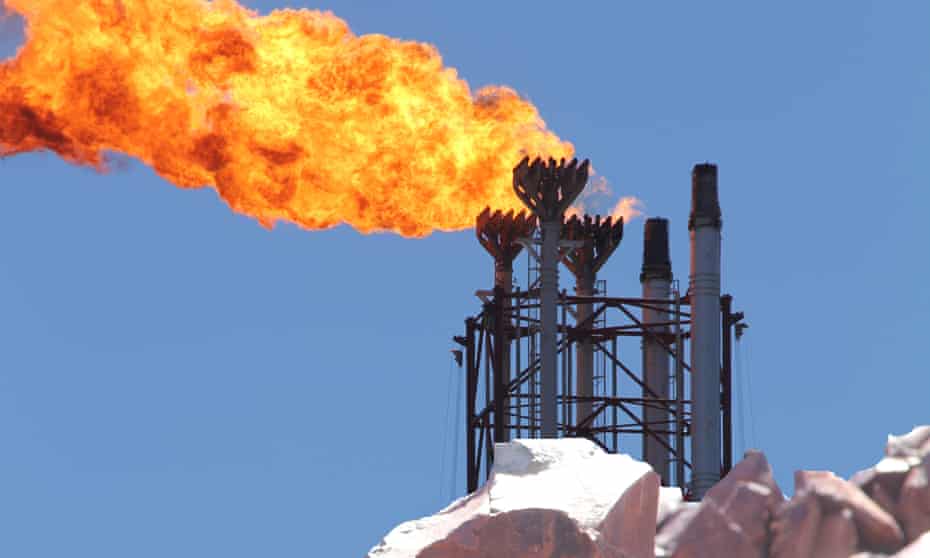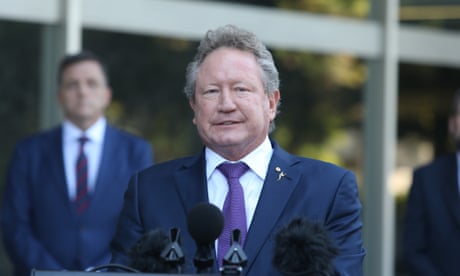Extract from The Guardian
Australia Institute report finds state received only $430m of its revenue from industry that generated $27bn in exports last year.

The “Gas-fired robbery” report, released Monday, finds Western Australia receives only a tiny fraction of its revenue from an industry that generated $27bn in WA exports last year.
The report comes just days after a WA heatwave matched Australia’s hottest ever reliably recorded temperature of 50.7C and reportedly caused an outage at a nearby gas plant.
The $430m that ended up in the state’s coffers was a mere 1% of budget revenue, or half as much as it collected from motor vehicle registrations. By contrast, the iron-ore industry tipped $7.8bn into the 2019/20 budget, more than 18 times as much as gas.

“Oil and gas companies like Woodside and Chevron are being given this valuable and finite resource virtually for free, making huge profits from its sale, creating few jobs and returning almost nothing to everyday West Australians,” said Mark Ogge, principal adviser at the Australia Institute’s Climate & Energy Program, and author of the report.
Chevron’s Gorgon contributed $7m in 2019-20 to the WA budget but was potentially generating revenue of more than four times that tally per day.
Although “paltry”, if the North West Shelf payments were extended at the same rate to the rest of the LNG industry in WA, more than $1bn would be generated for the state and $500m for the commonwealth, the report found. At its peak in 2013/14, the Woodside-run operation provided about triple the current level, or about $1.2bn, making up more than 4% of the budget revenue that year.
The tax and royalty arrangements “see large amounts of gas effectively given away for free to multinational oil and gas companies”, the report said. “[T]he obvious question is how much money could be raised if WA’s gas was subject to an effective royalty regime.”
With its reliance on expensive equipment rather than labour, the industry is also a relatively small employer in the state, accounting for less than 1% of the workforce, the report found. LNG also managed to extract $94m in subsidies from the state government in 2020/21.
“This kind of legislative blank cheque from government to an industry that offers so few jobs and revenue in return is symptomatic of the disproportionate influence of the LNG industry,” it said.
LNG’s contribution to greenhouse gas emissions is “immense” and growing as more projects line up for approval.
Current and proposed LNG projects - including Browse, Scarborough and the Pluto expansion – will alone emit 41.6m tonnes of carbon dioxide-equivalent in production and processing. That tally – which excludes the contribution when the gas is burnt by customers – amounts to almost half WA’s total emissions each year.
A spokesperson for the WA government did not dispute the revenue figures but said the contribution of the LNG industry – which reserves 15% of its output for WA customers – went beyond the extraction and processing of the fuel.
“Given energy is an essential input into most economic activity, we should not consider the employment effects of energy projects by simply looking at their operational workforce,” the official said.
“Domestic gas has underpinned the Western Australian economy – for domestic and industrial uses – for decades, and due to our strong domestic gas policy LNG projects continue to make a significant contribution to the state.”
Gas provides as much as 60% of the state’s electricity, and the Western Australian Gas and Downstream Industry Opportunities Study in August 2021 estimated downstream gas processing projects may contribute between $3bn-$10bn to the state economy over 20 years.
Chevron, too, defended its economic contribution. The US-based company has paid about $7bn in Australian state and federal taxes and royalties since 2009, a spokesperson said.
“Forecasts show by the early to mid-2020s, we will pay $1bn to $2.5bn a year in federal and state taxes and royalties,” she said.
“Our contribution in Australia goes far beyond tax,” with more than $60bn in local content generated by the Gorgon and Wheatstone projects with contracts reaching almost 1,000 in number for Australian businesses, and 19,000 construction jobs.
Claire Wilkinson, director of the WA division of the Australian Petroleum Production and Exploration Association, said: “Western Australians know that natural gas creates local jobs and is essential to our community, no matter what this east coast outfit [the Australia Institute] suggests.
“Critically, mining and minerals processing, a key generator of royalties for WA, is a big user of natural gas to power their activities,” Wilkinson said. “In the last 10 years alone, Western Australian natural gas has supported at least 57,000 full-time jobs and paid more than $53bn in taxes.”
Guardian Australia also approached the Morrison government, Woodside and Shell for comment.
No comments:
Post a Comment